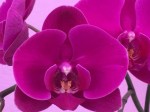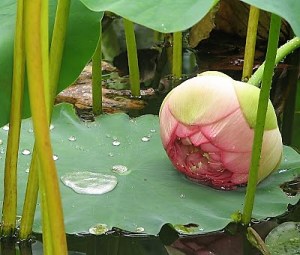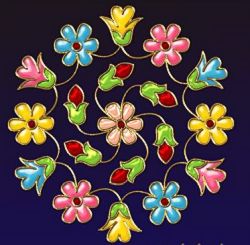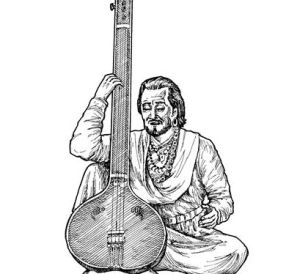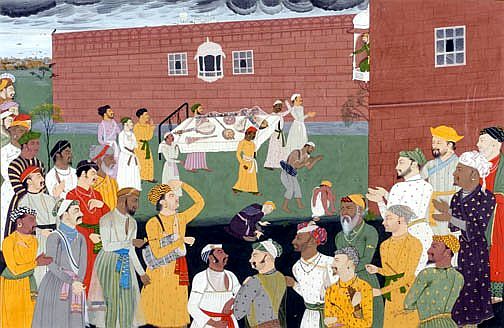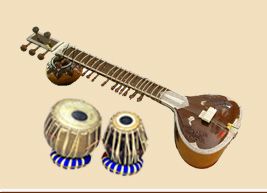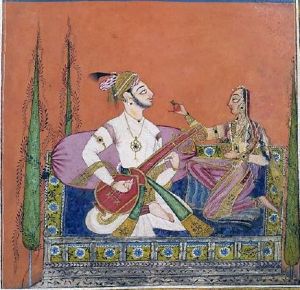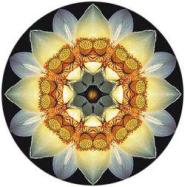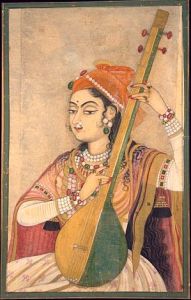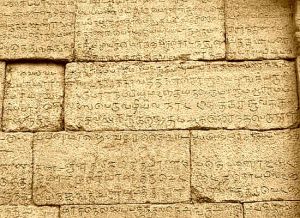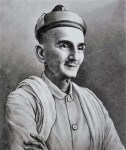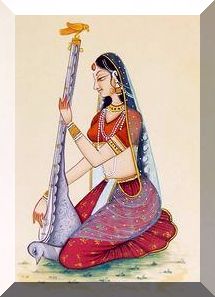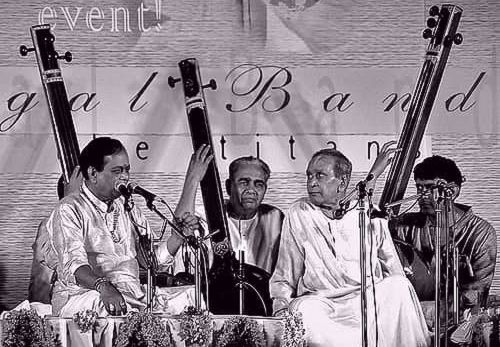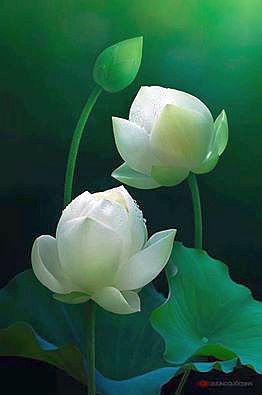Lakshana Granthas Continued
12. Nartana-nirnaya of Pundarika Vittala – Part Two

Nartana-nirnaya
The central theme or the focal point of the Nartana-nirnaya is the Nartaka, the Dancer and his performance (Nartana); and, all the other participants – the Taladhari (Cymbal player), Mrudangi (Drummer) and the Gayaka (Singer) – are ancillary to that. And, even the Nataka (Drama) is said to be a mere device to showcase his excellence.
The efficacy of the Nartana , the dance, is determined (Nirnaya) by the performances, the combined excellence and coordination of the Dancer (Nartaka) and his troupe (Vrnda), consisting the Singer (Gayaka), the Cymbalist (Tala-dhari), the Mrdangam-player (Mrdangi), flute-player (Mukhari), and the Dance-composer (Nattuva). These components, together, are the determinants (Nirnaya-kari) of the Dance (Nartana); hence the title of the text is Nartana-nirnaya.

The text Nartana-nirnaya is, at times , called as Nartaka-nirnaya , which some scholars opine is also quite appropriate; because , its principal subject is the Nartaka (dancer); while the Taladhari (cymbal player); the Mrdangi (Mrdangam player), and the Gayaka (singer) merely support the Nartaka as ancillaries.

Thus, in a Dance performance, the Nartaka is the most important performer. The next to him, in importance, is the Gayaka, the singer. He is followed, in the diminishing order of importance, by the Mrdangam player and the Taladhari.

The Nartana-nirnaya comprises four Chapters (Prakarana) each devoted to a type of participant, Viz., Taladhari (Cymbal player); Mrudangi (Mrdangam player); Gayaka (Singer); and, the Nartaka (Dancer). Thus the treatise focuses on the role of the artists involved in presentation of a Dance performance.
But, the very heart of a dance performance is the Nartaka, the Dancer. The other supporting artists supplement the Dance performance, by way of rhythm (Nattuvanga, Taala and Mrudanga); Melody (Raga); and Lyrics (Prabandha). The final Chapter is the very heart of the text; while the earlier three Chapters are about the infrastructural or ancillary support to the Dancer.
*
At the beginning of the first Chapter, the author declares his plan to write on five topics: Taala (rhythm); Vadya (instrumental music); Gita (vocal music); Nartana (Dance), and Natya (Drama) – NN. 1.3.

However, for some reason, he did not write the fifth Chapter, relating to Natya. The text of the Nartana-nirnaya, as it has come down to us, has only four Chapters, ending with the Prakarana on Nartana, the Dance.
*
The text begins with a set of 34 verses, written in a variety of metres, in praise of the Moughal Emperor Akbar and his ancestors.
Nartana-nirnaya is characteristically different from other works on performing Arts, in regard to the arrangement of the subject-wise chapters; the Divisions and Sub-divisions; organization of the supporting material and exposition.
The Nartana –nirnaya adopts a logical, coherent and a consistent approach in the arrangement and depiction of its subject.
Each Chapter contains considerable, original, conceptual and descriptive matter. Even where it is largely indebted to earlier authorities, it achieves a remarkable degree of ingenuity, clarity by judicious aesthetic arrangement of its topics.

Sopana-marga
The four Chapters of the text are arranged in what is known as Sopana-marga (or arohana-krama), in the ascending order of importance of the subject matter, like climbing up the stairs. Such a method of exposition; and, the arrangement of its subjects is said to be unique to Nartana-nirnaya.
Accordingly, the Chapter on Taladhari (the Cymbal-player), the one who keeps time and beats (Tala and Jati), appears first; and, is prior to the one on the Mrdangin (Mrdamgam player). And, Chapter on Mrdanga precedes the one on Gayaka. Finally the performance of the Nartaka (the Nartana) ; and, the Dance, in general (Nrtta) are discussed in the Fourth Chapter.
Following such scheme of arrangement, each chapter (beginning with that of the Cymbal-player) leads on to the next Chapter, which deals with the more important aspect of Dance. Here, the first two Chapters are concerned with the auxiliary of Dancing, viz., the rhythmic content (Nattuvanga, Tala and Mrdanga); the next (third) Chapter deals with the melodic content (Raga) and the lyrics of the song (Prabandha). The final and the most important Chapter is about Nartaka and Nartana.
The first Chapter, consisting of 260 verses, is on Taladhari, the Cymbal player, who provides rhythm; and, the second Chapter, in 116 verses, is on Mrdangam, the drums.
The Mrdangam and the Tala (Cymbal) provide the rhythm and time-units in terms of Tala and Laya. Of these two, the former is more important; because, his performance is more visible to the spectators – prekshitamukha (NN.2.7a). The Mrdangam player, in a sense, is the leader of the percussion instruments; and, the other percussion instruments look up to him for the lead. He is assigned 116 Slokas. The Chapter on Mrdangam follows that on the Tala.
But, the size of the Chapter on Taladhari is more than twice that on Mrdanga. That is merely because; the former includes about 144 slokas on Marga and Desi Talas and Tala-pratyayas. Otherwise, both the chapters are almost equal in extant – 127 and 118 Slokas respectively
The next in importance of the dance performance, is devoted to the Gayaka, who provides the textual and melodic framework for the Dance, in the form of the words, their content and the music (He is assigned 578 Slokas , in two segments concerning Raga , the melody (234 Slokas) and the Prabandha , the text (344 Slokas).
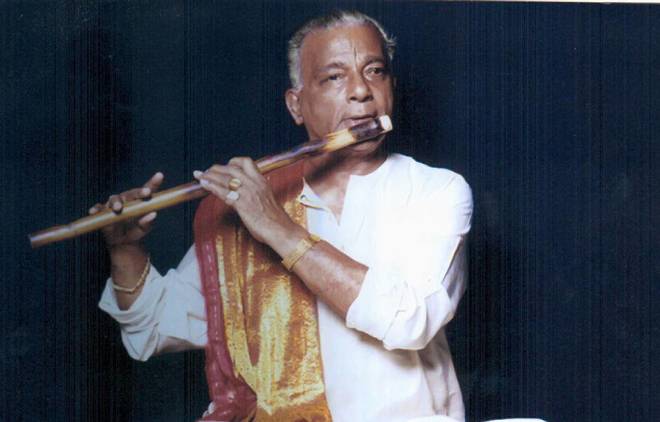
The role of the flute-player (Mukhari), who just follows the singer and provides the ambiance; but, has no independent function in the dance recital; is described in just 38 Slokas in the Chapter on Dance.
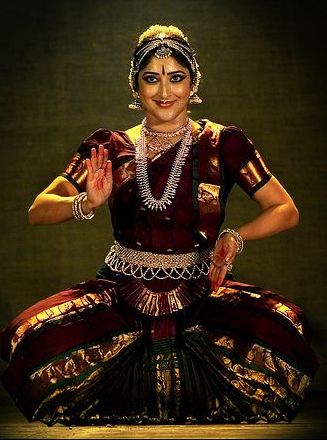
Eventually, following the hierarchical arrangement of the components of Dance , proceeding in the successive stages of importance, the earlier three Chapters lead to the Fourth and Final Chapter which deals with the most important component of Dance, the Dancer, the Nartaka, himself, the central figure of the performance.
The fourth Chapter, the largest one, having 913 verses, is devoted to Nartaka and his performance. This Chapter starts by defining Nartana, a term used by the author to mean Dance, in general. The Dancer’s (Nartaka) performance is presented in its two aspects: Nartana (dance in general combined with Abhinaya-237 Slokas); and, the Nrtta (pure dance- 676 Slokas).
Here again, the Nartana is said to comprise three kinds: Natya, Nrtya and Nrtta (Natyam Nrtyam Nrttam iti trividham tat prakirtitam); of which, the last is again divided into three types: Visama (difficult, acrobatic), Vikata (hideous) and Laghu (light).
Natya, as the wise explain, is adorned with a narration, teaching, Vritti, Bhava and Rasa; and, is complete with four kinds of Abhinayas (NN.4.3-4)
Nrtya is Dance that is beautiful in all its four components and delighting the hearts of the spectators.
Nrtta is that which provides aesthetic pleasure enjoyed by the people; it is resplendent and spectacular in all its aspects (Angas) through the display of the movements (Vikshepa) of the hands, feet etc., although it is bereft of the Abhinaya –element (NN.4.5-6)
All the types are defined; and, the author reproduces in the first ten verses of the Nartana-Adhikarana, the Sangita-ratnakara’s view that Nrtya and Nrtta may both have varieties of Tandava and Lasya.
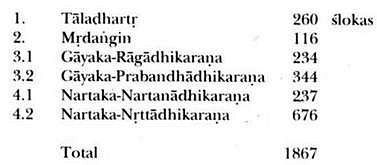
Outline
Each Prakarana (Chapter) of Nartana-Nirnaya gives, at its commencement, a summary of its content. Further, Each Prakarana begins with a definition of the respective performer, in terms of his function, merits and defects. It then proceeds to describe and discuss the materials of the performance medium; the techniques; and, the forms of compositional repertoire.
[The exception to this rule is the Chapter Nartana-adhikarana (4.1). Its summary is given at the beginning of Chapter Three at 3.1 and 3.2, thus treating both the Adhikaranas as a single Chapter. ]
Separate lists of the contents for the Tala, Raga, Prabandha, Pratyanga-abhinaya, compositional structural elements etc., are given in the respective Adhikaranas, before taking up their definitions, descriptions or discussions
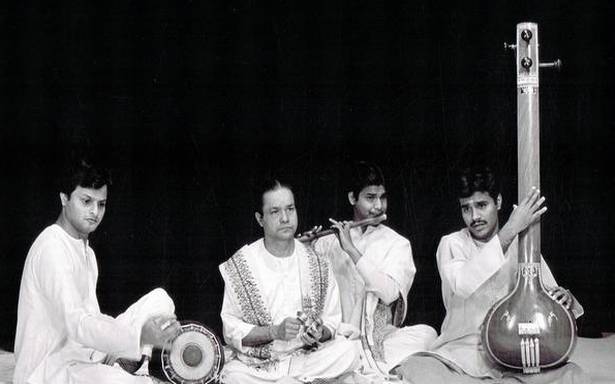
The contents of treatise
Taladhari Prakarana

Pundarika Vittala commences his treatise with a prayer to his favorite deity (Ista-Devata) Sri Krishna, the most sublime of the Dancers, sporting the divine Rasa Dance (NN. 1.1.-3. Mangala charanam):
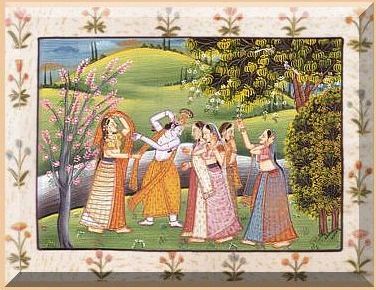
I bow to that my Lord Sri Krishna, who is the final recourse (Upetu) of all devotees (Yati) for bestowing liberation (Moksha) ; one who is the abode of all classes of mortals; and, one who is immersed in the Rasa Dance . With that Lord residing in my heart, I shall proceed to narrate the Nartana-nirnaya.

**
At the commencement of his treatise – Chapter One – Taladhari Prakarana – Pundarika Vittala states that the roles assigned to the Taladhari (Cymbal player); the Mrudangi (Mrdamgam player); the Gayaka (singer), the Nartaka (Dancer); as also the substance of the play, form the components of Nartana-nirnaya (NN.1.3)
Then, he says: I shall describes these five elements of Nartana, in an ascending order, starting with the Cymbal player.

The opening Chapter on Taladhari is divided into the following thematic clusters: the player; his instrument, which is the Cymbal; his stance; performing techniques, varities of the instrumental compositions (Tala- Tala pratyaya tala sadhana) etc. It also lists:
- The desired qualities of the Cymbal bearer;
- Paatas (sound syllables) of percussion instruments;
- Desi Talas
- Alamkaras, Kavita , likewise the ten sancharas ; performing postures; the method of performing on the Cymbals –Stuti-sabda
- The composition named Gajara; then Ota; Vakya-sruti bhushana, patachali ; then rudrabhushana , panchadathu
- Sudakarma (compositions) ; Yati and other Prabandhas , Prahelicas (percussive conundrums), Talas, and other devices ( exact knowledge of them)
As regards the merits (Guna) of the Taladhari, it is said:
- He should be handsome; having pleasant contours; and, assume an attractive posture while playing.
- He should be an expert in percussive –instrumental syllables, skilful in string the Cymbals,
- He should be well conversant with Yati, Prasa, Tala and tempo (Laya). He should have sound knowledge of Graha , such as Sama , specialized in performing soft and harsh ( percussive) syllables; light of hands ( dextrous in playing the Cymbals)
- He should have adequate skill in picking up in picking up (Graha), in resting (Moksha) during Nattuvanga, corresponding to the vocalized syllables. Similarly, he should be an expert in ten Sancaras, having adequate stamina, and intense attentiveness
- He should be skilled in Desi Talas; have the capacity to create aesthetic appeal, ability to please and win over the spectators.
**
Mrdangi Prakarana
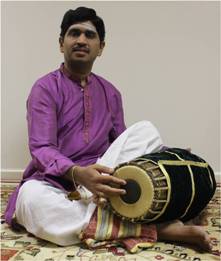
And, the Chapter on Mrdangam is also similarly treated. It enumerates the merits (Guna) and defects (Dosha) of the Mrdangam player; his appropriate stance; techniques in use of fingers, palms; varieties of instrumental compositions; repertoire for accompanying Dance performances ; the merits and defects of his own performance etc.
The topics described here cover:
- Varieties of Mrudanga –players called Bharika;
- Merits and defects of the Mrdangam player;
- Descriptions of the Mrdanga;
- Hasta-paatas ; drum syllables;
- Mrudanga vadana karma – methods of playing the Mrdanga ( concert repertoire); and,
- performing stance and style of the Mrdangam player
**
Gayaka Prakarana

The Chapter on Gayaka, the singer, has two segments (Adhikaranas) : one dealing with the melodic aspects (Raga-adhikarana); and, the other with the lyrics and varieties of its compositions (Prabandha-adhikarana).
Gayaka Prakarana – Raga-adhikarana
The first segment (Raga-adhikarana) commences with the definition of the singer; the role and the importance of the singer in a Dance performance ; his merits and defects; modes of singing; ways of rendering melodic elements in a song – Ragalapa; establishing a Raga.
Here, it is said; the true singer is one who is proficient in Shudda and Chayalaga (Ragas and Prabandhas); one who understands the Murchana, Grama and Tana; and, one who possess profound knowledge of Tala; and , sings with aesthetic delight – Ranjaka Gitam (NN.2.1).

Pundarika lists the merits (Guna) of a singer
- He should be an expert in Graha and Moksha – competently following and managing the beginning and end of the song in Laya and Tala
- Conversant (Alapti-kovida) is various kinds of Alapti, Sravaka (melodious and heard even from a distance), Sampradayika (traditional);
- Specialist in bringing out the delicate nuances (Dhvani) of Ragas and Prabandhas , in pleasing and well cultured (Ayatta-kanthavan) sweet and rich voice (Susarira) even while rendering in high( loud) or low ( soft) tone –Savadhanaka; with inflexion curvature in tone (Kaku); and, skilled in employing
- Understands and follows closely the Dancer’s movements and the appropriate vocal support the situation needs.
- Thorough familiarity with both the Marga and Desi Music
*
As regards the merits of a song (Gita-guna), they are said to be ten : Vyakta (clarity in the combination of syllables); Purna (complete in all its limbs and Gamaka); Prasanna (readily intelligible); Sukumara (tender , soft); Alamkritam ( endowed with poetic beauty); Sama (evenness in the distribution of the rhythm and pitch); Surakta ( in harmony with the sounds of the Veena); Slakhna (smoothness in the movement from low, middle and high pitches ; and slow and fast tempo); Vikrasta ( high , distinctly audible); and , Madhura ( sweet, graceful and highly pleasing) – (NN.2.229-230)

*
The desired qualities of a composer are said to be: through knowledge of Grammar (Vyakarana), figures of speech (Alamkara); prosody (Chhandas); diction, style and a vast and rich vocabulary.
He should have the capacity to compose different varieties of songs; and, have the skill to set the words to match with the music.(NN.2.338)

*
Then, the text moves on to lay down the framework or the structure of the melodic content, the tone-curvatures (Kaku) of the Raga-alapa. That is followed by the varieties of the Alapti, establishing the nature and the mood of the Raga; the lists of the Raga and the descriptions of the Raga, and the descriptions of the Raga-raginis and Ragaputras that are commonly used; their descriptions; appropriate tones and curvatures while rendering the words of the song bringing out its delicate nuances etc.
In this section, Pundarika Vittala largely follows Sarangadeva while enumerating the merits and defects of a Singer , in the matter of presenting various elements of music and their facets such as : Nada- Sthana; Sruti; Svara, Grama, Murchana; Tana ; Prastara, Varna; Alamkara; Gamaka; Alapti etc. That is followed by an exposition on the Ragas; their descriptions and classifications. Here, Pundarika discusses in detail the characteristics of the Raga-families such as: Shudda-bhiravi; Hindola; Desikara; Sriraga; Shuddha-nata; and Nata-narayana;
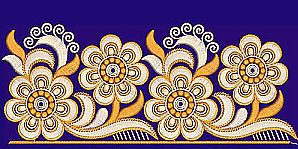
Gayaka Prakarana –Prabandha-adhikarana
The segment on Prabandha (Prabandha-adhikarana) – musical compositions following the definitions prescribed for Desi Ragas – deals with two aspects of the song: word (Mathu) and the Music (Dhathu). It is also called as Gana. (NN.3.1)
The segment on Prabandha (Prabandha-adhikarana) – musical compositions following the definitions prescribed for Desi Ragas – deals with two aspects of the song: word (Mathu) and the Music (Dhathu). It is also called as Gana. (NN.3.1)

Its word-content (Vasthu or Mathu) is analysed into syllabic structures. There is also a mention of the fruits that may accrue to the performer and the patron form their use.
And, the musical content (Dhatu) consists of Raga and Tala. The former is treated in the preceding Raga-Adhikarana; and the latter in the very first Chapter (Taladhari Prakarana); because, it is essential to dance, music and also to song.
That is why Prabandha follows Raga and Tala; and, precedes Nartana
*
The Prabandha, here, is first analyzed into melodic and structural elements; and, is classified through them. Pundarika discusses the Six Angas (components) of a Prabandha: Svara (seven musical notes); Birudu (laudatory phrases); Pada (one that expresses meaning); Tenaka (tena-tena sounds); Paata (instrumental sounds); and, Tala (time-units). It is explained; among these Angas; Tena and Pada are the eyes; Paata and Birudu are the hands; and, Tala and Svara constitute the feet of a Prabandha. The Tena (tena-tena) sounds are the manifestations of auspiciousness (Mangala-kara)- (NN.3.10)

Here, Pundarika Vittala, supplements his explanations with illustrations from the contemporary materials derived from various regions/provinces.
Then, the ancient Prabandhas – textually and orally transmitted – are listed and described. As with the Tala, the Raga, and the Dance forms; the author concludes the topic with the description of the contemporary material taken from different parts of the country. The Chapter concludes with an account of the merits and defects of the song rendering and the music composition.
Here, again, Pundarika Vittala follows Sarangadeva and Kallinatha, while describing the varieties of Prabandhas and their characteristics, in terms of their structure and textual elements. He cites with illustrations, 75 types of Prabandhas spread over: 8 of Shuddha Suda class, 24 of Alikrama, 36 of Viprakirna, and 7 of Salaga Suda variety. Pundarika Vittala provides explanations for their applications in different parts of song –composition.
In the process, he describes eleven Prabandhas that were unique to the traditions of Karnataka: Chandraprakasha; Suryaprakasha; Navaratna; Vira-srngara; Rudraprakasha; Ranaranga; Dasavatara; Sarabhalila; Caturanga; Rtuprakasha; and, Srngarahara.
**
Nartana-prakarana
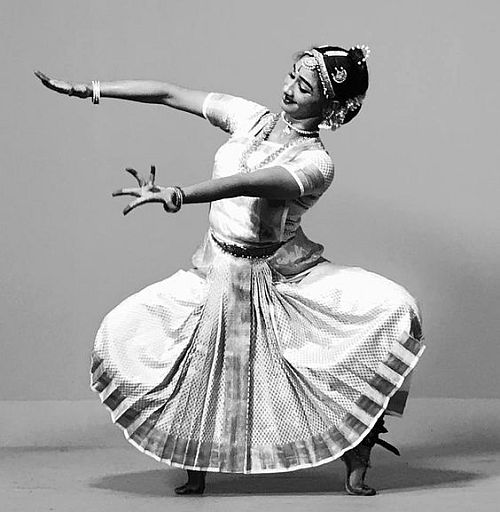
The Chapter titled Nartana-prakarana is highly relevant to Dancing. And, it is the most important Chapter of the text; and, it is, in fact, the prime factor of the treatise, as it provides the very basis or the cause of its title Nartana-nirnaya.
This Chapter accounts for almost half the size of the text. And, it is devoted to Nartana, which is presented in two Adhikaranas: one, dealing with Nartana, the dance form endowed with emotive content, the representational art of dancing, giving expression to emotions through Abhinaya ; and other, with Nrtta which provides aesthetic experience derived from pure form of Dance through disposition, movement and configuration of the various parts of the human body, employed as a communicative instrument to give a form to its expressions. Here also, Pundarika, largely, follows the explanations provided by previous authorities; such as Bharata, Abhinavagupta, Kallinatha and Sarangadeva.
Nartaka Prakarana – Nartana_ Adhikarana
This Adhikarana relating to performance of dance – Nartana-prakarana – also deals with the persons involved in the presentation of Dance, such as: Nartaka, Patra, Nartaki, the supporting instrumentalists, the Patron, the audience (Sabha-sada) etc., their merits and defects.
Next, the orchestra in which only the flutist and the flute are discussed, since the other members , viz., Taladhari, Mrdangin, and Gayaka are already discussed in the previous Chapters
Also in the list are the dance-hall, the characteristics of a good dancer, Rekha or the lines created by the movements of the body, the Lasyangas or features of Lasya, Sausthava or standing without any movement, Citrakalasa or concluding movement, Mudra or natural grace, Pramana or harmony, the audience, the person presiding, sitting arrangements, the troupe of musicians, the flute, the entrance of a dancer and various dance-sequences. The actual discussions of these topics are in verses 245 to 656. Most of the material comes either from the Natyashastra or the Sangita-ratnakara.
While enumerating the desired qualities (Guna) of a Nartaka (Dancer), it is said; he should have a thorough knowledge of all the four forms of Abhinaya; the requisite skill in maintaining Laya, Tala and Yati; the knowledge of Graha and Moksha; and, above all should have humility, the keen desire to learn and the attractive grace to win the hearts of the spectators.. Besides these, a Dancer of merit should have the capacity to follow vocal and instrumental music; ability to express Rasa and Bhava articulately. (NN.3.325-327)
Then the text goes on to enumerate the items of the dance recital: the opening dance item, entry of the dancer (Mukhacali, including Pushpanjali and various Gatis-strides); Nanadi Slokas invoking the blessings of the gods; the kinds of Urupa, Dhavada, Kvada, Laaga and Bhramari.
Finally the contemporary dance forms from various regions (Desi) are enumerated. These include the dance forms originating from various regions: Sabda, Svarabhinaya, Svaramantha, Gita, Cindu, Dharu, Dhruvapada, Jakkadi and Raasa.
Some of these are classified under Bandhanrtta, the group dances with complex configurations and formations.
These are also of the Anibaddha type, the graceful, simple dances, not restricted by the regimen of the rules etc.
Under Bandha-nrtta, Pundarika includes Mukhacali; Urupa; Dhuvada; Vidulagava; Sabdacali; (also discussed as Sabda-nrtta); Sabda-prabandha; Svara-mantha; Gitapra-bandha; Cindu; Dharu and Dhruv-apada. Their descriptions in verses 668 to 874 show them to be highly structured dance pieces. A group of five Bhramaris is also discussed (in Verses 794 to 98) inserted between the discussions on Vidulagava and Sabda-nrtta.
Next, Anibandha dance is discussed in verses 875 to 898 with its forms given, namely, Namavall; Yati; different Neris; kaivartana; Rnuru, Talariipaka; Gundala; Kamala; Natajanuka; Mandi; Mudupa; Murandari; Kudupa; Tiryakarana; Lavani and Vatu. These have fewer details compared to the discussion of the Bandh-anrttas.
At the end of these descriptions the author refers to these sequences as Anibandha – Urupas, evidently using the term Urupa to denote a broad category of dance. The term Urupa is described in only two works: in this text; and, in a later work, the Sangita-makaranda of the scholar Vedasuri.

Abhinaya
Like most works before it, the Nartana-nirnaya also discusses the various types of Abhinaya (that which carries the intent or meaning of the performance to the spectator), namely, Angika-abhinaya, Sattvika-abhinaya and Aharya-abhinaya; and in doing so it follows the Natyashastra as interpreted in the Sangita-ratnakara.
Generally, the representation of meaning – descriptive and representational – is called Abhinaya; and, it is accomplished in four modes: verbal (Vacika), body-movements (Angika), emotional (Sattvika), and costumes as well as make up (Aharya). But in the Nartana-nirnaya, the Vacika, is not discussed; because, it is not much employed in Nartana. Similarly, there is not much discussion on Aharya.
In verses 11 to 206, Abhinaya is discussed, with the Sattvika, and Angika types of Abhinaya described in detail. The Citrabhinaya is then described in verses 207 to 238.
The Dance is presented through idealistic and dramatized mode of communication (Natya-dharmi) following the theatrical conventions, in preference to the realistic, day-to-day expressions (Loka-dharmi). These two Dharmis together constitute Chitrabhinaya (special representation).
The external objects are suggested through appropriate gestures (Bahya-vastu-anukarani). And, the implicit and symbolic representations are presented through Chitta-vrtti-arpika.
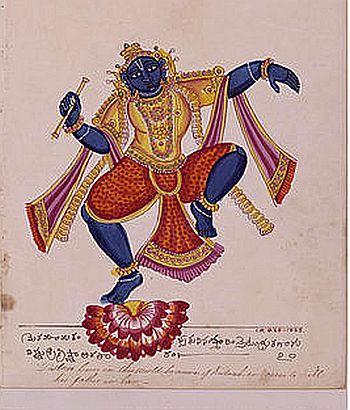
Nartaka Prakarana – Nrtta _adhikarana
The segment (Adhikarana) on Nrtta deals with the abstract aesthetic movements and configuration of various body parts. It is virtually about the Grammar of Dance. . It describes the Nrtta element of Dancing with reference to the special configuration of the static and moving elements of the Dance, such as: Sthanaka, Karana, Angahara, Cari, Hasta, Angri, Recaka, Vartana etc., with reference to the appropriate Anga or Pratyanga.
Anga-Pratyanga
According to Natyashastra, for the purpose of Dance, the human body may be divided into six major members or Angas: the head; the trunk; the Arms and the legs together with their respective subdivisions or minor members (Pratyangas). For instance; the Pratyangas of the head are: eyebrows, eyes (eyelashes and eyeballs); nose (nostrils); cheeks, chin, teeth, as also facial colour. Similarly, the Pratyangas of the Arms are: the shoulders; elbows; forearm; wrists; palms (back of the hand); and fingers.
The Nrtta-adhikarana may be treated as the Grammar portion of Nartana-nirnaya where the various movements of the Angas and Pratyangas are comparable to the alphabets, the word formations, phrases, clauses and sentences (in which the conjunctions, prepositions and syntactical rules or conventions are invoked).
However, Pundarika Vittala does not classify the movements of the limbs as those specifically pertaining either to Anga, Upanga or Pratyanga. But, in verses 239 to 244, where he lists his topics of discussion, he mentions the movements of the parts of the body which, in his view, are of importance. These include the movements of the head, the eyes, the eyebrows, the arms, the hand-gestures and other actions of the hands, the waist and the feet. He also discusses the function of the colour of the face. The list further includes more complicated movements generated from the combination of the movements of the parts of the body, such as the Sthanas or postures; Caris or the movements of one leg; Karanas or dance-units ; and, the Recakas or oscillating movements.
However, instead of following the usual practice of reproducing the descriptions of the 108 Karanas and the 32 Angaharas details as given in the Natyashastra and the Sangita-ratnakara, the Nartana-nirnaya selects only 16 of the Karanas as those needed in Bandh-anrtya, of which it describes several varieties. The text then proceeds to describe the distinctive features of the various kinds of Anibandha-nrtya. From these descriptions of dance compositions there emerge striking similarities with the classical dance styles of the present time, such as Kathak and Odissi. Thus, Nartana-nirnaya may thus be regarded as the link between the older and present day traditions of classical Indian dancing
The Nartana-nirnaya is therefore regarded as a major work that throws light on the origins of some of the dance forms – particularly Kathak and Odissi – that are prevalent today.
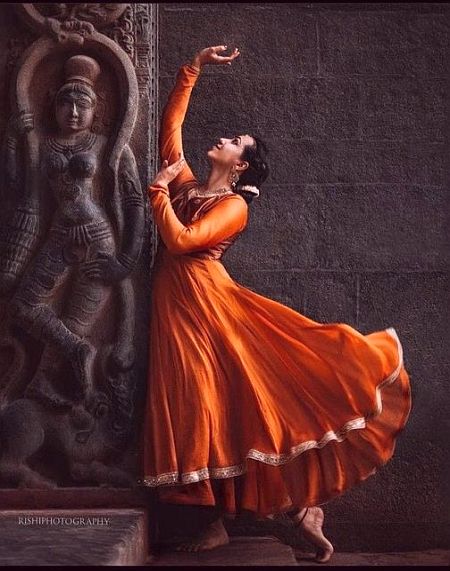
Nartana-nirnaya describes in Pratyanga-abhinaya, 19 movements of the head (Shiro-bedha); 36 of eyes (Akshi-bedha); 7 of eyebrows (Bhru-bedha); 4 complexions (Mukha-raga); 16 movements of the arms (Bahu-bedha); 6 of the hips (Kati-bedha); and, 13 of the feet (Anghri-bedha).
These correspond, in name and number, to the enumerations made in Sangita-ratnakara. But, Pundarika Vittala offers a slightly different set of applications of these Pratyangas.
This is also true of Recaka; Karakarana; Calaka; Hasta-pracara; and, Karakarma.
Nartana-nirnaya has adopted from the Sangita-ratnakara all of the 6 Purusha Sthanakas; but, only 3 of the 7 Stri Sthanakas (excepting the Gatagata, Valita, Motita and Vinivartita)
As regards the Desi-sthanakas, except the Parsni-parsvagata; Eka-prasvagata; Eka-janugata; and, Pravarta are included.
Among the 9 Upavista- sthanakas, the Utkata-sthana has been omitted. It has also omitted all the Supta-stanakas. Thus, in all, Pundarika selects only 27 among the 51 Sthanakas enumerated in the Sangita-ratnakara.
Again, Sangita-ratnakara describes 86 Caris, classified into 16 Bhumya (touching the ground); 16 Akasha (Aerial); and, 35 Desi Bhumya and 19 Desi Akasha Caris.
But, Nartana-nirnaya gives only 84 of these under Bhumya and Akasha divisions; but , not classified as Marga or Desi Caris.
As regards the Hasthas ( the hands) , as against the 24 single Hasthas (Asamyukta), 13 combined Hasthas (Samyukta) and 30 Nrtta Hasthas ( 67) of Sangita-ratnakara, the Nartana-nirnaya adds 38 more single Hasthas; 17 combined Hasthas; and 32 Nrtta Hasthas
Pundarika Vittala describes only 16 Karanas among the 108 given by Sarangadeva. According to Pundarika, it is only these 16 Karanas that are useful in performing Bhanda-nrtya, structured Dance forms.
Generally, Pundarika follows the descriptions given in the Natyashastra and the Sangita-ratnakara, in regard to the depictions of the Sthanakas, Caris, Hasthas and the Karanas. But, his treatment of these subjects differs, considerably, from that of the others.
Finally, Pundarika Vittala ends the work with two more dance sequences, Jakkadi and Rasa, which he includes under Anibandha dance (875 to 912).
Throughout these descriptions the terms Nrtta and Nrtya are used interchangeably.
*
Rasa-nrtya
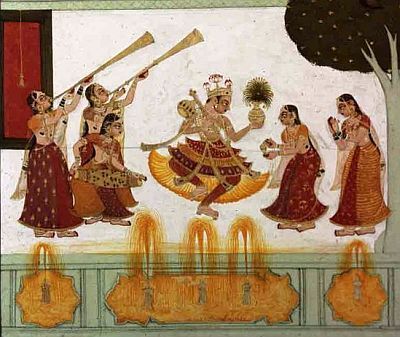
Pundarika Vittala had commenced his treatise Nartana-nirnaya with an invocation to his Lord Sri Krishna; and, appropriately, he ends his treatise submitting his prayers to Sri Krishna, the very heart and essence of Rasa Dance.

And; he concludes the Nartana-nirnaya with a description of Rasa Dance – Rasa-nrtya (NN. verses 664 -672) that Sri Krishna performed with the Goips amidst the mango and Kadamba groves along the banks of the gentle flowing Yamuna under resplendent full moon of the spring season, celebrating the Vasantha festival.
As the Muraja and other musical instruments play, the pairs of four, eight, sixteen, thirty-two or sixteen pairs of players (Patra) of men young men and women dance in rhythm ; following the Tala and Laya; ; holding in their hand coloured sticks of sixteen Angulas in length, bound with gold and other metals at both ends; perform delightful Caris and Bhramaris; moving around in circles; weaving amazing geometric patterns (mandalibhuya); singing delightfully; then it is called as the most fascinating Dandarasa
And, the same dance performed without sticks is Rasa-nrtya.
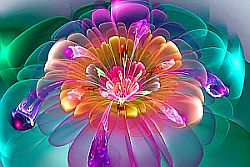
Upasamhara
The last four verses of the Fourth Chapter contain Pundarika’s concluding remarks (Upasamhara) ; his observations on the general state of Dance; his efforts to bring clarity into a rather muddled practices; and, a final prayer. He says:
The theory and practices (Lakshya-Lakshana) Dance which had become ambiguous (Sandignam) and had shrunk (Sangata) because of the blind traditions has been rescued and rendered simpler by the efforts of Pundarika Vittala.
I have composed this treatise (Sangita), which is much varied in both the aspects of theory and practice of Dance; and is much simpler and easy to follow; in order to please (ruchyartham) Emperor Akbar. May this bring great joy to the hearts of you all, my friends (Suhadam Hrdaye Sukham Bhuyath).
By studying (Drstva) this excellent (Lokottara), varied (Bahutara-bhedam) , beautiful (Sundara) Nartana-nirnaya, composed by Pandari Vitthala; as also by judicious use of the Art of Sangita as prevailing, may the learned scholars (Pandita) become the Gurus of the new-age and guide along the right path the aspirants desirous of learning and become experts (Chatura, Agrinam) in the Arts of Tala, Mrdanga, Singing (Gana), flute playing (Vamsa), and Dancing (Nrtya).
Thus ends the Fourth Chapter entitled Nartaka-Prakarana in Nartana-nirnaya composed by Pandarika Vittala of the auspicious Karnataka region (Karnata-jatiya).
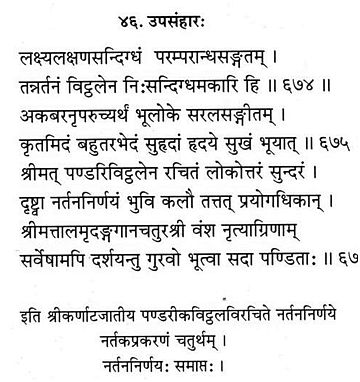

Sources and References
The primary source on which I have depended upon is Nartana-nirnaya (in three volumes) edited and commented upon by the renowned scholar Prof. Dr. R. Satyanarayana. For Volume Three ; please click here
For Volume One :please click here
For more on Nartana- nirnaya and other texts on Dance forms ; as also for the details of the few mentioned here , please do read Dr. Mandakranta Bose’s research paper ( The Evolution of Classical Indian Dance Literature: A Study of the Sanskritic Tradition
Also refer to Pundarika Vittala by Dr. Padma Rajagopal
http://hdl.handle.net/10603/60012
And to Musicological Literature by Emmie te Nijenhuis
ALL IMAGES ARE FROM INTERNET
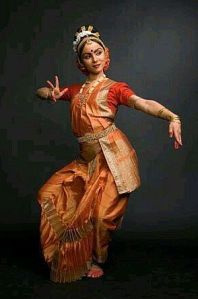
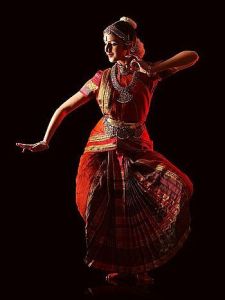

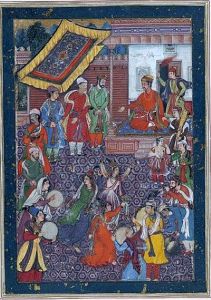

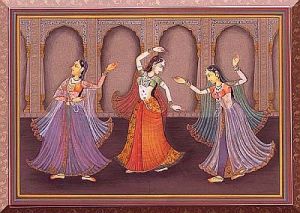
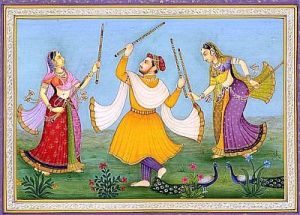
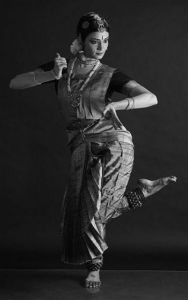




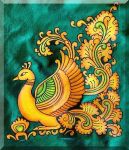
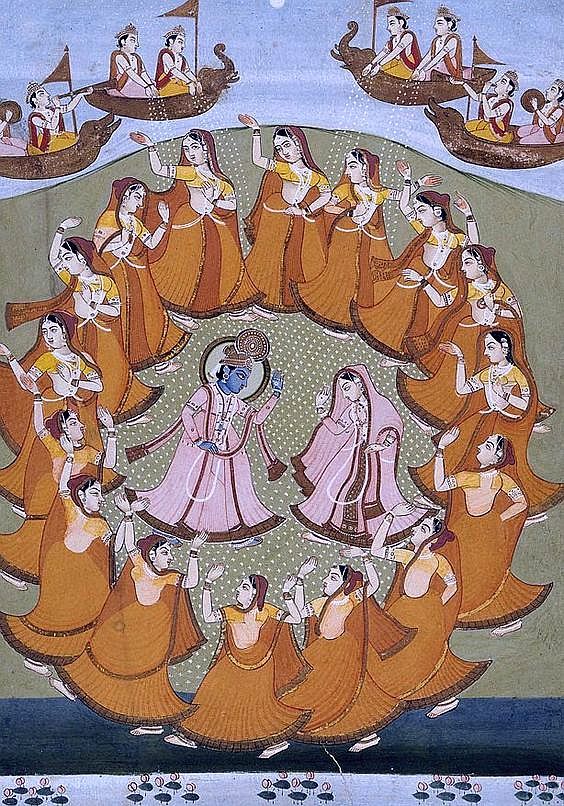
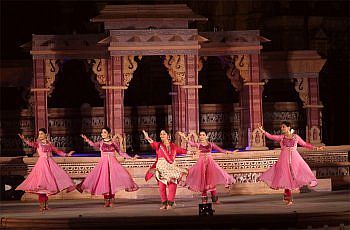
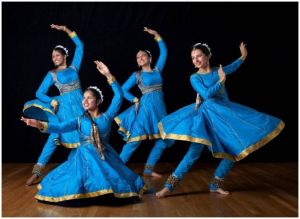



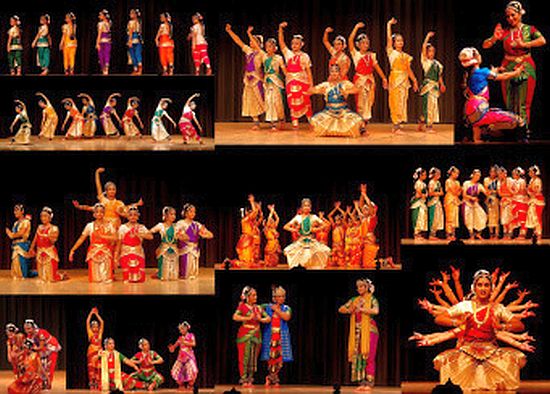
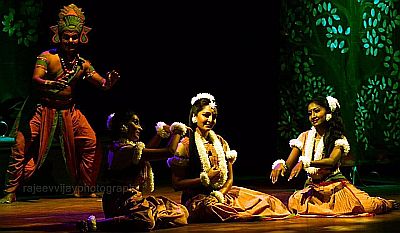
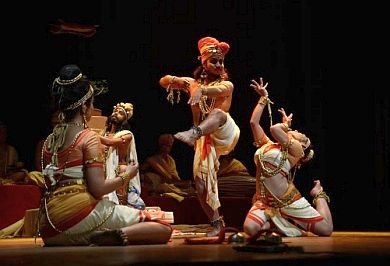



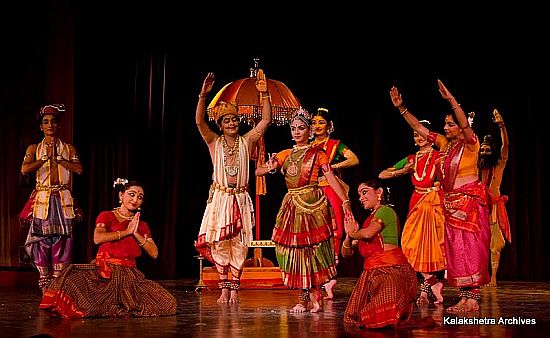
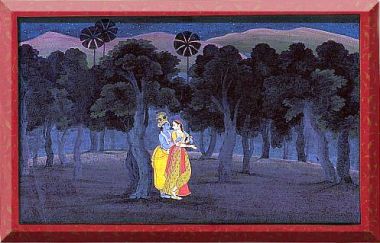
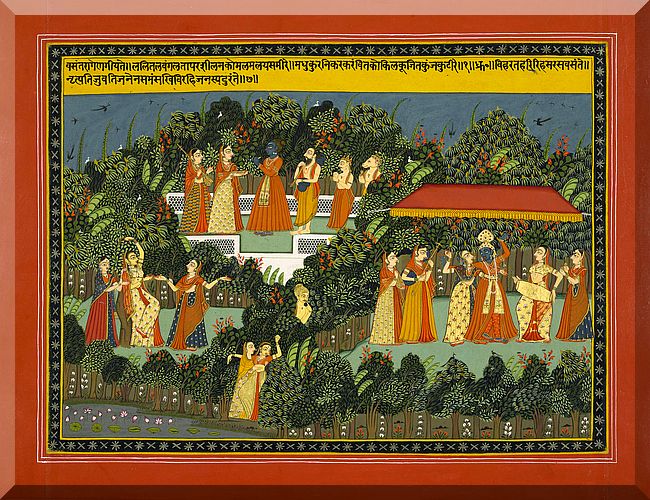
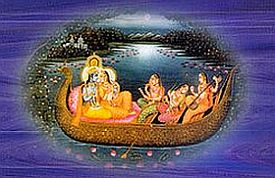

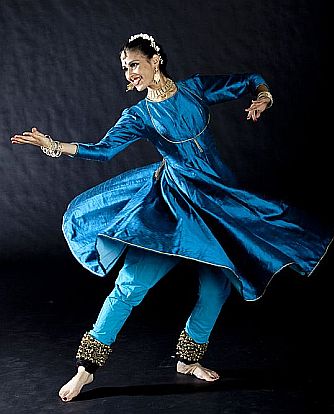

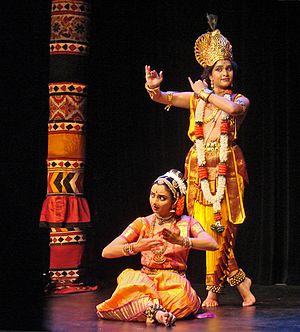
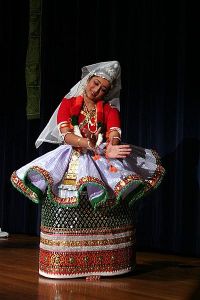

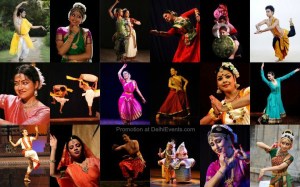
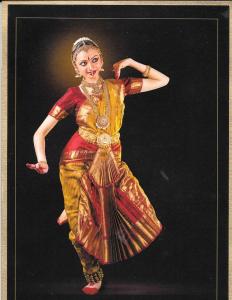
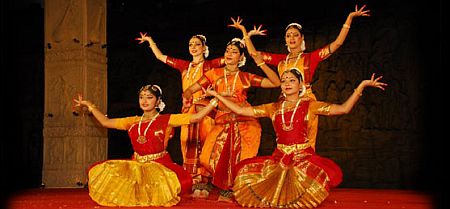

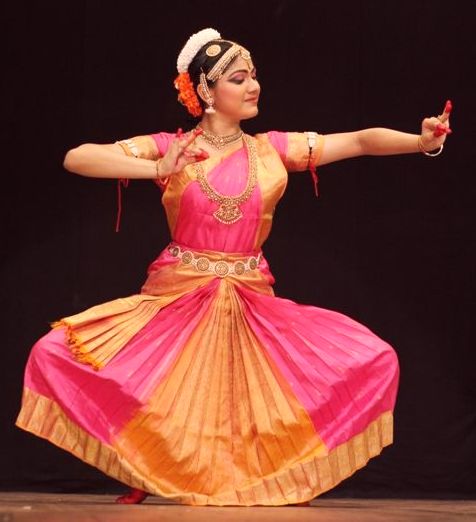
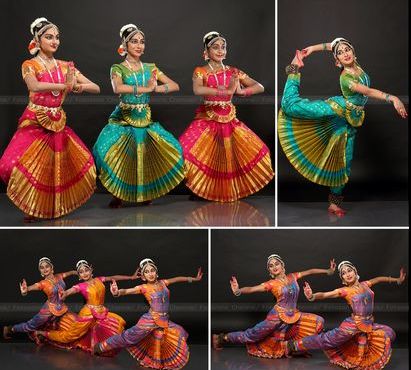

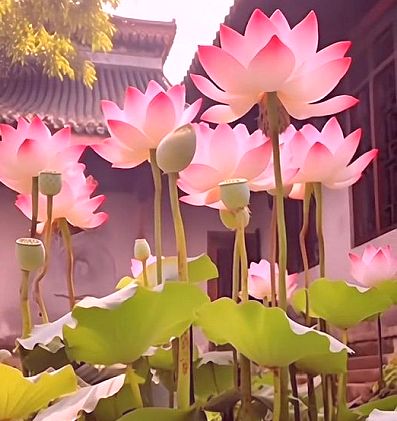


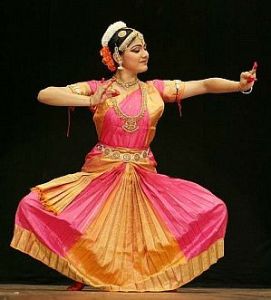

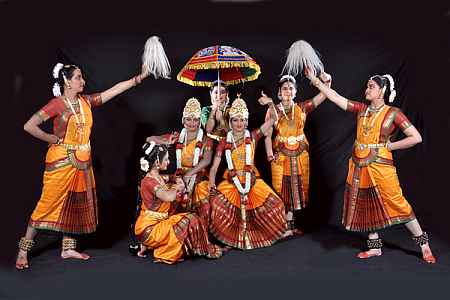
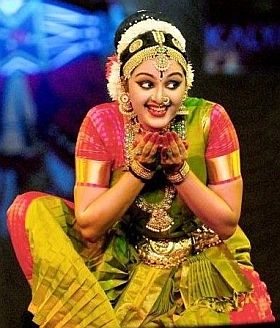
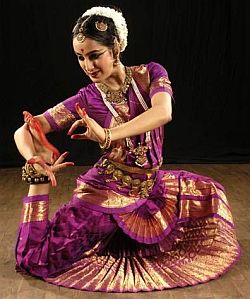


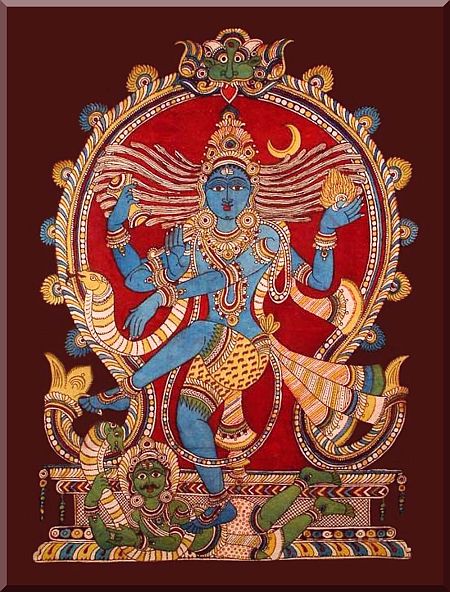
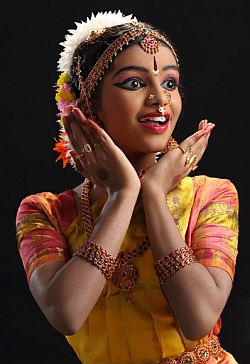
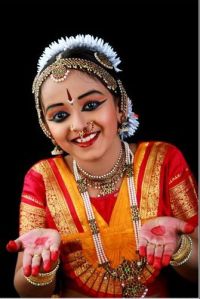
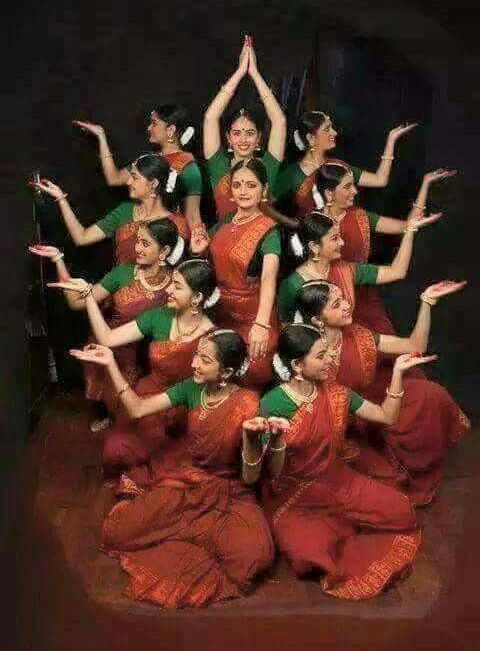



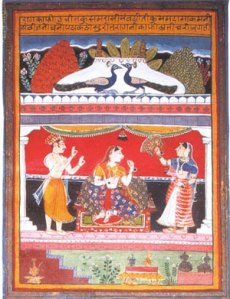
 Govinda Dikshita, a musician and a Kannada speaking (Hoysala Karnataka Brahmin) scholar, philosopher, statesman and musicologist hailing from Mysore, served as a Minister of three successive Kings of Thanjavuru, Achyutappa Nayaka (1560 AD-1614 AD), Raghunatha Nayaka (1600 AD-1645 AD) and Vijayaraghava Nayaka (1634 AD-1673 AD) , all of whom patronized Karnataka Samgita . Govinda Dikshita’s two sons Yagnanarayana Dikshita and Venkatershwara Dikshita or Venkatamakhin were both scholar- musicians. All the three were in the service of the Kings of Tanjore.
Govinda Dikshita, a musician and a Kannada speaking (Hoysala Karnataka Brahmin) scholar, philosopher, statesman and musicologist hailing from Mysore, served as a Minister of three successive Kings of Thanjavuru, Achyutappa Nayaka (1560 AD-1614 AD), Raghunatha Nayaka (1600 AD-1645 AD) and Vijayaraghava Nayaka (1634 AD-1673 AD) , all of whom patronized Karnataka Samgita . Govinda Dikshita’s two sons Yagnanarayana Dikshita and Venkatershwara Dikshita or Venkatamakhin were both scholar- musicians. All the three were in the service of the Kings of Tanjore.

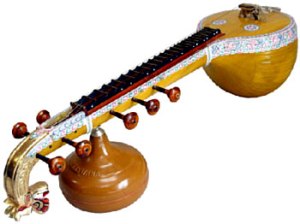
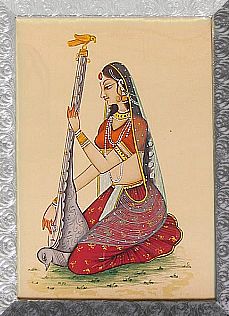

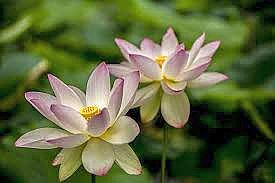

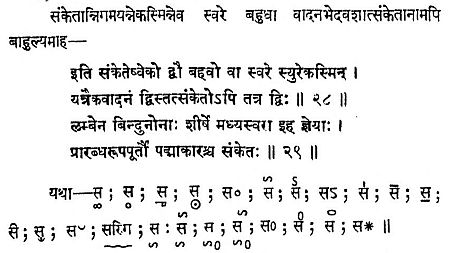
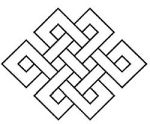


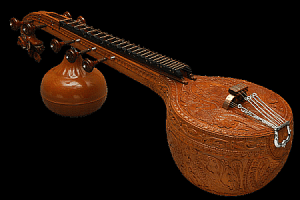

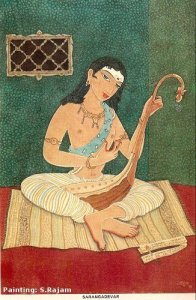

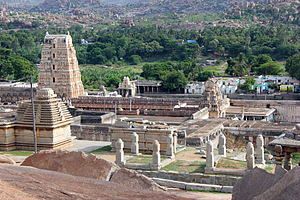
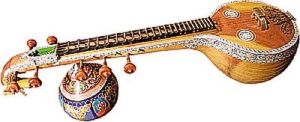

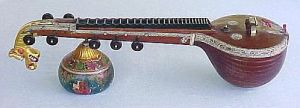
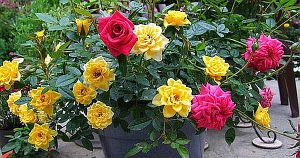

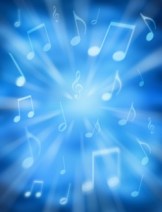
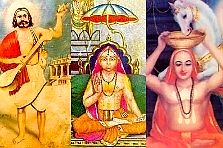



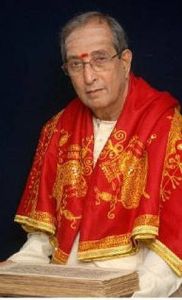 Mahamahopadyaya Dr. R. Satyanarayana , who has rendered immense service to various field of study such as Music, Dance, Literature and Sri Vidya, explains that the Dhruva Prabandha after which Suladi was patterned employed nine different types of Taalas, while they were sung as a series of separate songs. Thereafter, there came into vogue a practice of treating each song as a stanza or Dhatu (or charana as it is now called) of one lengthy song. And, it was sung as one Prabandha called Suladi. Thus, the Suladi was a Taala-malika, the garland of Taalas or a multi-taala structure.
Mahamahopadyaya Dr. R. Satyanarayana , who has rendered immense service to various field of study such as Music, Dance, Literature and Sri Vidya, explains that the Dhruva Prabandha after which Suladi was patterned employed nine different types of Taalas, while they were sung as a series of separate songs. Thereafter, there came into vogue a practice of treating each song as a stanza or Dhatu (or charana as it is now called) of one lengthy song. And, it was sung as one Prabandha called Suladi. Thus, the Suladi was a Taala-malika, the garland of Taalas or a multi-taala structure.
